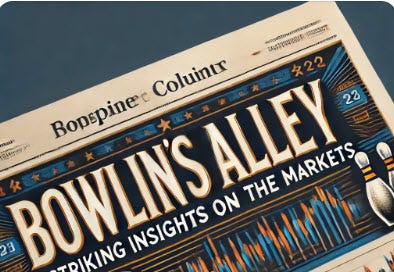Back in the first few weeks of Econ 101, I remember being introduced to a comforting character: the rational consumer.
This person was cool, collected, and endlessly consistent.
They always maximized utility.
They compared marginal benefits to marginal costs.
And they never bought a jet ski with their tax refund.
It was a beautiful idea—until I met actual consumers.
Real people. With real bills. And real emotions.
The kind who clip coupons, then spend $18 on avocado toast.
So let’s talk about the myth at the heart of most economic theory:
Rational consumers don’t drive the economy. Emotional ones do.
🧠 Why Economists Love Rationality
The rational consumer simplifies everything.
In theory, people:
Have stable preferences
Know what they want
Have access to perfect information
And respond logically to price changes
This framework makes models easier to build.
It allows you to predict outcomes.
And it sets up tidy graphs for textbooks and PowerPoints.
But it also sets economists up for disappointment when people don’t behave the way the model says they should.
Because in the real world, people:
Change their minds constantly
Get overwhelmed by options
Fall for free shipping and BOGO deals
And often spend emotionally, not logically
In other words: we don’t have utility functions—we have credit limits and coping mechanisms.
🛒 What Real Consumers Do Instead
Here’s what I’ve learned after 40+ years in teaching finance and economics:
Most consumers make decisions based on a mix of:
✔️ Habit
✔️ Fear
✔️ Social comparison
✔️ Anchoring
✔️ Convenience
✔️ Emotional reward
And often, they aren’t trying to maximize anything—they’re trying to feel okay. Or at least, less anxious than they did yesterday.
For example:
We’ll drive 20 minutes to save $4 on cereal, then order a $2,000 phone online without flinching.
We’ll spend hours researching airline prices, then accept the rental car upsell because “it’s just easier.”
We’ll cancel Netflix to cut costs, then impulse-buy a rowing machine on Instagram at midnight.
This isn’t irrational in the wild—it’s irrational only by textbook standards.
📈 The Big Shift: From Optimization to Emotion
Classical economics says: People want more for less.
Behavioral economics says: People want to feel better.
And that shift explains a lot:
Why subscription models are booming (predictability feels safe)
Why tipping culture exploded during COVID (empathy, not math)
Why Buy Now, Pay Later is growing faster than savings accounts
Why “self-care spending” keeps rising even during inflation
These aren’t utility-maximizing choices—they’re mood management choices.
If we judged rationality by happiness-per-dollar instead of marginal utility, we’d write very different textbooks.
🧪 Behavioral Finance: Where the Real Lessons Are
Thankfully, fields like behavioral economics and behavioral finance have tried to fix the gap.
They’ve identified dozens of quirks that define real consumer behavior:
Loss aversion: We hate losing $10 more than we enjoy finding $10.
Present bias: We’d rather have $50 now than $100 later.
Framing effect: The way a choice is described changes how we feel about it.
Mental accounting: We treat tax refunds like “free money” and investment losses like moral failure.
But even these concepts don’t fully replace the neatness of the rational consumer—they just remind us that human behavior can’t be cleanly graphed.
📦 What It Means for the Economy
So why does this matter?
Because if your models assume consumers are rational, you miss the underlying driver of:
Consumer confidence
Market bubbles
Recession psychology
Brand loyalty
Retail seasonality
And pretty much all of advertising
Remember: GDP is just a sum of all spending.
And if most spending is emotionally driven, our economy is, too.
Which is why recessions aren’t just technical—they’re psychological.
💼 What It Means for Advisors and Investors
If you’re a financial advisor, economist, or strategist, this shift isn’t just academic. It’s practical.
Because irrationality shows up in:
Clients panic-selling at market bottoms
Holding too much cash “just in case”
Treating inheritances differently than earned income
Chasing yield during bull markets and hiding in CDs during rallies
Smart professionals don’t fight this.
They coach around it.
They build systems that account for human behavior—not just financial formulas.
Because if you ignore how people feel about money, you’ll never understand how they actually use it.
🧠 Takeaway:
The rational consumer is a helpful myth—but a myth nonetheless.
The real drivers of spending, saving, and investing are emotional.
And if you want to understand the economy—or guide anyone through it—you have to respect that people aren't walking spreadsheets.
They're stories. With memories, hopes, and blind spots.
Tomorrow: GDP Feels Like a Lie (and Sometimes Is).


